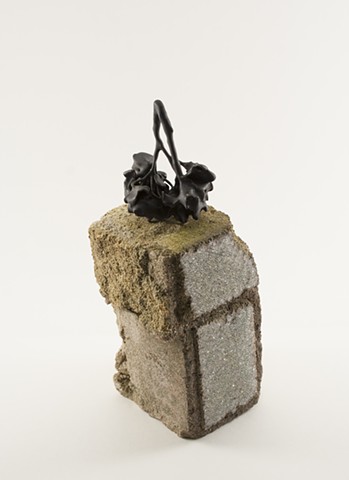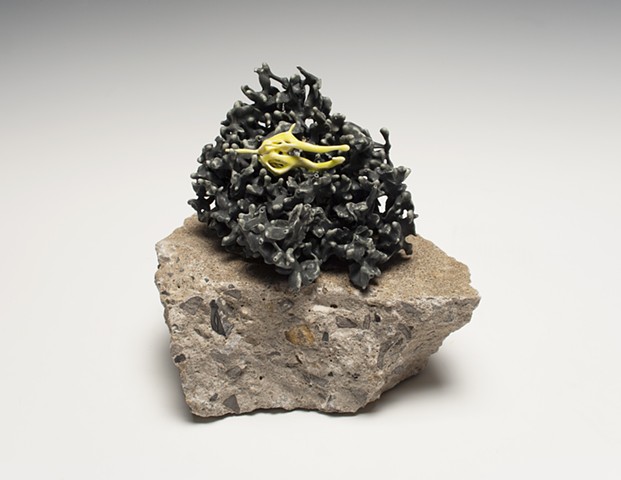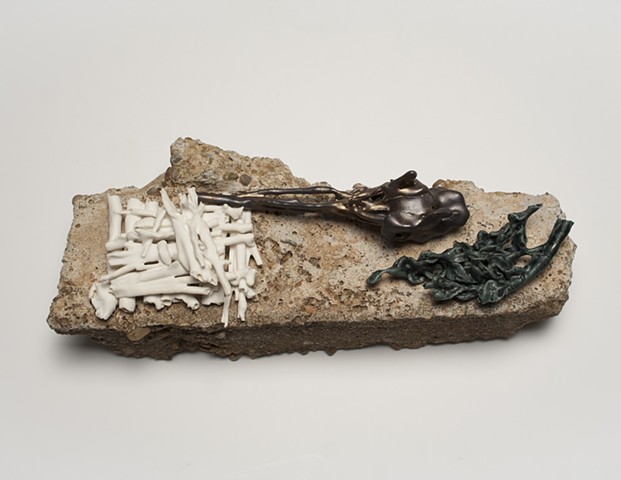Necropastoral Sculptural Assemblages
I am a scavenger and gleaner. As I move through the constructed landscapes of urban and suburban spaces, I find myself reaching down to collect bits and pieces of roadways, sidewalks, and crumbling architecture. These chunks of brick and concrete are geological in their presence: signifiers of the Anthropocene epoch, constructed by the actions of humanity rather than the forces of nature. I am attracted to the exquisite variety found in the conglomerations of these urban artifacts. Once these fragments arrive in the studio, I carefully wash away the dirt and grime, scrubbing clean their surfaces to reveal a surprising range of colors and textures. Some are further embellished with enamel and reflective highly reflective beading, while others remain in their original state.
My habit of collecting also extends to natural world. The foliage that I am compelled to gather and preserve tends toward the fleeting and the unwanted: weeds collected by the roadside, branches and leaves trimmed from hedges, shrubs and trees removed to improve the view, and flowers picked as they begin to wilt and fade. In the studio, I dip these bits and pieces of plant material in liquid clay. These pieces are then dried and fired, slowly burning away the original organic material, leaving behind only delicate porcelain fossils. These fragile objects are then glazed in variety of colors and textures and fired again to an even hotter temperature. The layers of slip and glaze on these fragile porcelain forms serve to obscure the once recognizable flowers and leaves, stripping them of their familiar connotations. Many are lost, broken, or discarded in the in this process. I sift through what remains, in search of the most beautiful and intriguing fragments.
These disparate concrete and porcelain objects find union in my carefully composed sculptural forms. The precisely constructed arrangements imply bits of landscape overtaken by a nature that has become luminous and radioactive. Others resemble carefully ordered and composed specimens on display. These tiny fragments evoke dark gardens of fragile and shadowy foliage, conjuring a landscape both enchanting and contaminated.























